Indian goat breeds are very resilient, robust, and prolific. They are capable of adapting to a wide variety of climate situations. Commercial goat rearing is quite popular in India nowadays. Additionally, the demand for indigenous Indian goat breeds has increased. Additionally, many goat breeds are available in India, based on the country’s geographical region.
These goat breeds have a unique profiles, traits, and overall performance. This article will discuss the best goat breeds in India for meat and milk. Almost all of these serve as dual-purpose goat breeds in India. Check out the best meat and milk goat breeds in India below.
Best Meat and Milk Goat Breeds in India
Osmanabadi
Osmanabdi goats are native to Maharashtra, India. This is one of India’s greatest goat breeds for goat farming, whether milk production or meat production. This medium-sized goat breed usually produces twins, triplets, and quadruplets during each gestation. The coat is mostly black but can also be white, brown, or spotted.
In case you missed it: Cashmere Goat Characteristics, Facts, Profile
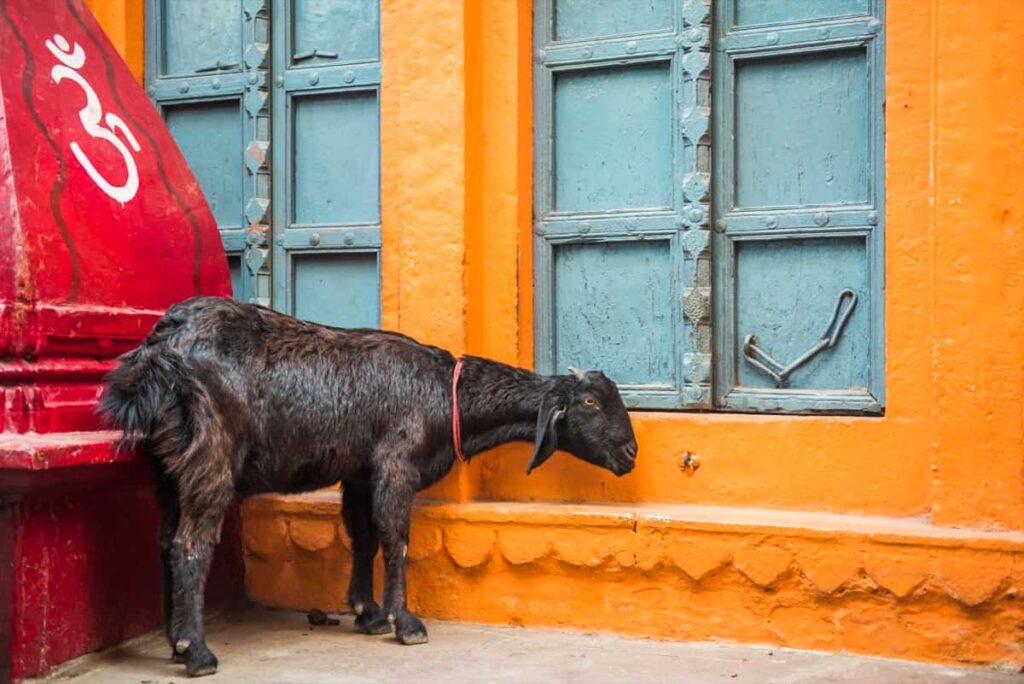
The average newborn’s weight is 2.4 kg. It undergoes kidding once a year. The average age of the first kidding is between 19 and 20 months. The meat is of high grade. Excellent yielders can generate up to 3.5 kg per day. In addition, 170-180 kg of milk is produced on average for each lactation.
Barbari
In Haryana, this is popular in Delhi, Uttar Pradesh, Gurgaon, Karnal, Panipat, and Rohtak. These breeds are primarily found in Delhi, Uttar Pradesh, and Haryana. Barbari breeds are mainly bred for milk and meat production. This breed is a blend of white and purple. Mature female goats weigh between 25 and 35 kilograms, whereas adult male goats weigh 35 and 45. They can produce between 1 and 1.5 kg of milk every day.
These breeds are more fertile. They will deliver between two and three kids during parturition. They are typically stall-fed and produce between 0.90 and 1.25 kilograms of milk over a 108-day lactation phase. They are prolific breeders, producing two young every 12-15 months. This breed usually undergoes kidding twice at 12 to 15 months.
Jamunapari
Jamunapari breeds are primarily found in Uttar Pradesh. It has a white coat with brown or black patterns on the neck and ears; this is India’s biggest and most graceful long-legged goat. It has a large Roman nose with a bunch of hair, making it look like a parrot’s mouth. Goats of a large size, tall and slim, with a convex face and big folded pendulous ears. They are typically white. Mature females weigh between 45 and 60 kilograms, and adult males weigh 65 and 80 kilograms, up to 4 kg in average birth weight.
In case you missed it: Effective and Profitable Commercial Goat Farming: Key Rules to Start from Scratch, Best Milk and Meat Goat Breeds
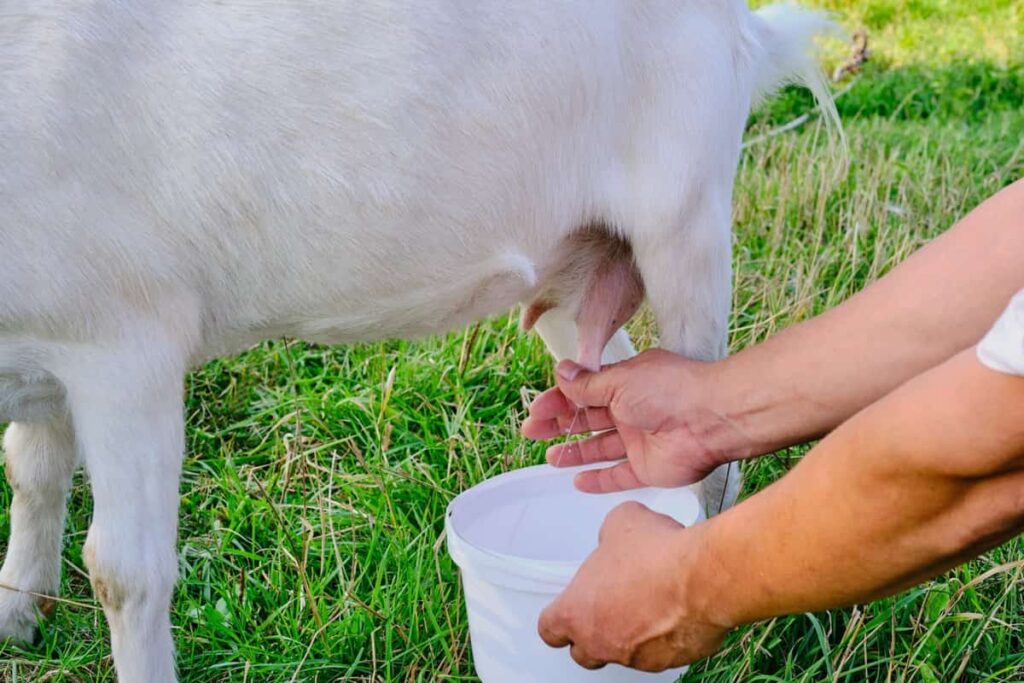
The average age of the first kidding is between 20 and 25 months. They have a huge udder and enormous teats and produce average milk of 280 kg in 274 days. They can produce between 2 and 2.5 kg of milk each day. Milk has a fat content of between 3 and 3.5 percent. Breeds with higher milk yields are not found in Tamilnadu because of climatic circumstances. They flourish best on open ranges with an abundance of grazing bushes.
Beetal
Beetal breeds are mostly found in the Punjab state. These breeds are primarily bred for milk and meat production. Generally smaller than the Jamunapari breeds. Mature female goats weigh between 40 and 50 kilograms, whereas adult male goats weigh between 50 and 70. 20-22 months at the time of the first kidding.
Lactation yield averages 150 kg. They can produce between 1 and 2 kg of milk every day. The maximum yield is 591.5 kg over the 177-day lactation period. The coat is usually black, although it also may be red, brown, or black, thickly spotted on white. They are born at an average weight of 3 kg.
Tellicherry
Kerala is home to the majority of these breeds. They are primarily bred for meat production. An adult female goat weighs between 30 and 40 kilograms, while an adult male goat weighs 40 and 50 kg. Each day, they can produce 1 to 2 kg of milk. These breeds are more fertile. They are capable of giving birth to two to three kids during parturition. This breed is cultivated in Tamil Nadu and can produce one or two offspring.
Sirohi
Sirohi breed coat color can be brown, white, or a combination of colors in characteristic patches; hair is rough and short. A buck’s average weight is 50 kg, whereas a doe’s average is 23 kg. The average birth weight is 2.0 kg. Kidding occurs yearly, and twins are common. Nineteen months is the average age at first kidding of a breed goat. The lactation yield is an average of 71 kg. Lactation lasts an average of 175 days.
Malabari
It is indigenous to northern Kerala. The coat color ranges from white to completely black; black and white, black and brown, and white with colored patches are all possible. A buck weighs 39 kilograms, and a doe weighs 31 kilograms; the average birth weight is 1.6 kilograms.
Kidding occurs once a year, and twins are triplets common. The average litter size is 2.1. The average age at first kidding is 19-21 months. Meat is of average quality in this breed. Daily milk production ranges between 0.9 and 2.8 kilograms—milk production averages 65 kilograms each lactation. Lactation lasts an average of 172 days. It has flawless skin.
Kanni Adu
These are the tallest goat breeds in the Tamil Nadu districts of Thirunelveli and Ramanathapuram. The black or white patches are the breed’s distinguishing colors on a black backdrop. They are mainly cultivated for meat purposes. Mature females weigh about 25 and 30 kilograms, while adult males weigh between 35 and 40. They thrive in drought-prone areas. As a result, this breed is well-suited to our country.
In case you missed it: Building a Cheap Goat Shed – A Beginners Guide
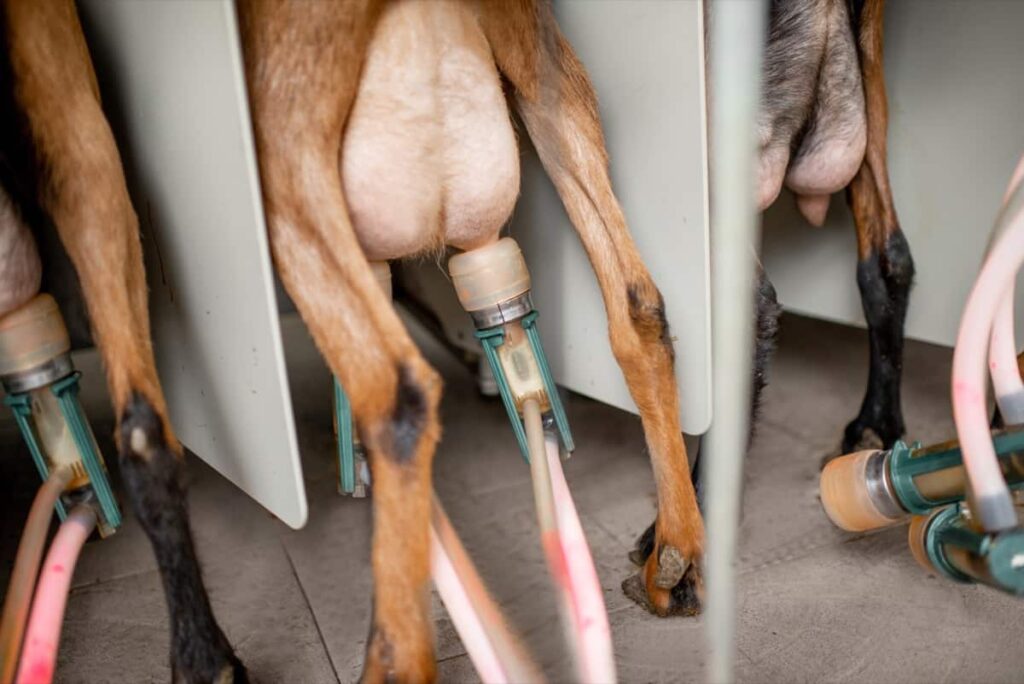
Chegu
Chegu coats are typically white. However, this breed also exhibits greyish-red and varied colors. In the Chegu breed, a buck’s average live weight is 39 kg, while a doe’s average is 26 kg. This breed’s average birth weight is 2.0 kg. In this breed, kidding happens once a year, and most kids are born in a single count. The lactation yield is 69 kg, and the lactation duration averages 187 days. This breed is employed for draught work to transport salt and other minor loads. This breed has long hair and a sensitive undercoat.
Kodi Adu
These breeds are often taller in size and come in various colors. They give birth to one or two kids at the time of kidding. They are often produced to guide goat herds to feeding areas. These breeds are mostly found in Tamil Nadu’s Siva Gangai, Ramanathapuram, and Tuticorin districts. This black breed is ideal for Tamil Nadu.
Jakharana
Jakharana goats are mainly used as dairy goats. And it is a significant dairy goat breed in India’s semi-arid state of Rajasthan. They range in size from medium to giant, having a generally compact body. Their bodies are nearly identical to the Beetal goats, but the Jakharana goats are somewhat longer. They have a black coat with white markings on the ears and muzzle. Their faces are straight, with a lifted brow. The adult doe’s average live body weight is around 45 kg. The adult buck’s typical live body weight is around 55 kg.
Mehsana
Mehsana is an Indian goat breed with dual-purpose origins in India’s Gujarat state. Although the breed is pure in its original territory, it is also seen in the neighboring areas. Mehsana goats range from medium to big and have convex facial features. Their coat is mostly black, with white patches at the base of their ears. Their coat is shaggy and long, with a straight nose line.
Their ears are medium in size and have a pale white tint. Their horns are curled upward and backward with sharp points and have one or two twists. Additionally, both men and females have been sharpened. The adult buck’s average weight is 37 kg. The average live weight of a mature doe is 32 kilograms.
Surti
The Surti breed goats are some of India’s greatest milking goats. In the Indian state of Gujarat, the breed got its name in Surat. Their bodies are tiny to medium in size. Their coat is primarily white with short, glossy hairs. Their ears are of average height and drooping. A nursing doe’s average daily milk output is around 2 kg. The adult doe averages roughly 30 kg in live weight. The adult buck’s typical live body weight is approximately 32 kg.
Dwarf Goat Breeds in India
Changthangi
This breed is mostly white with brown, grey, and black markings. The undercoat of this breed is white/grey. This breed produces pashmina, a soft, toasty fabric. The torso and legs of this breed are small yet strong. The average buck weighs 20 kg in this breed, the average doe weighs 20 kg, and the average birth weight is 2.1 kg. Kidding occurs once a year; usually, only a single kid is born each time. In this breed, the average age at first kidding is 20 months.
In case you missed it: Dutch Landrace Goat Breed Profile, Characterstics
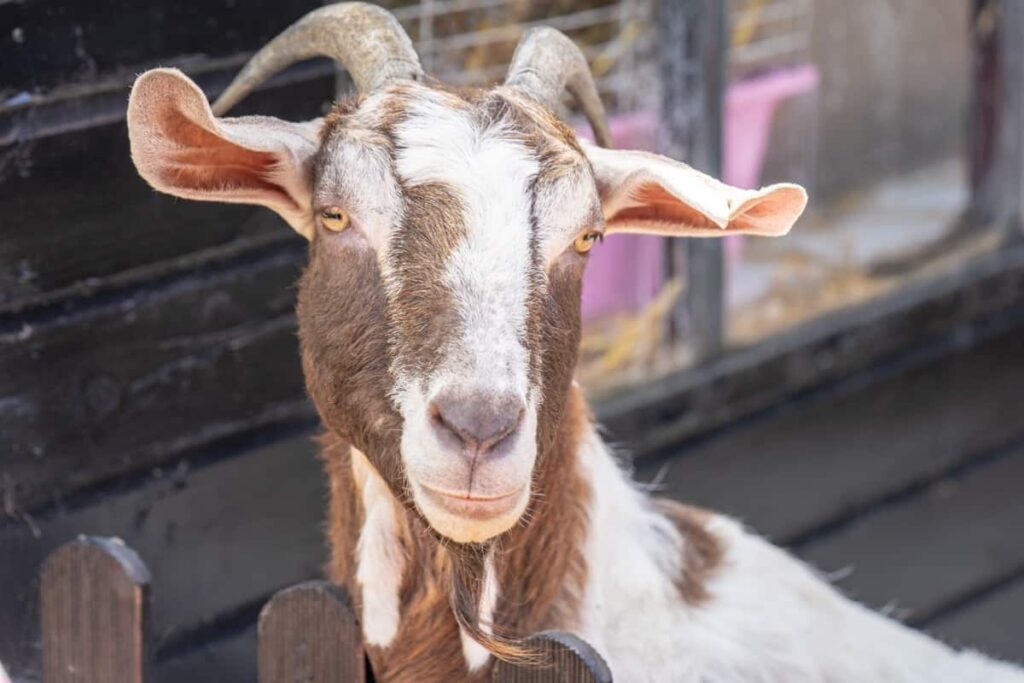
Kutchi
The Kutchi goat is often referred to as the Kathiawari goat. It is a significant domestic goat breed from Gujarat, India. It is a breed that can be used for meat and milk production, making it a versatile animal. Kutchi goats are medium-sized creatures with small bodies and rather lengthy legs.
The animals’ coats are primarily black, with a few white patches. Their ears are small, flappy, limp, and marked with the characteristic white. Their brows are slightly arched. The Does can generate around 2 kg of milk per day. The adult doe’s average live body weight is roughly 40 kg. And the typical live body weight of a mature buck is between 46 and 49 kg.
Black Bengal
The Black Bengal Coat is primarily black, brown/grey, and white, with short, silky, glossy hair. Dwarf in size, the average living weight of a buck is 15 kg, whereas the average live weight of a doe is 12 kg. This breed is the most numerous of all Indian breeds. Multiple births are typical in this breed, with two, three, or four kids born at a time.
Kidding occurs twice a year, with an average litter size of 2.1. The typical age of first kidding is nine to ten months, and the average lactation production is fifty-three kg. Lactation lasts between 90 and 120 days. Its skin is highly sought after for high-end shoemaking.
Goat Breeds for Eid Purpose
Sojat
The Sojat goat is regarded as the greatest goat breed in India for goat farming or Eid purpose goat farming. A decent Sojat goat costs between 20,000 and 25,000 rupees during Eid. If you rear 25 male goats for a year, you can easily earn 5,00,000 rupees via Eid sales. With an expenditure of 1.5 lakh rupees on rearing this goat, you may easily make 3.5 lakh rupees minimum.
This is the most heinous circumstance imaginable. These goat breeds are from Rajasthan. This is an unrecognized Indian goat breed. This breed’s coat is either pure white or gulabi. This goat is pretty heavy. It is readily capable of gaining 50 kg in a year.
In case you missed it: Danish Landrace Goat Characterstics, Fatcs, Profile
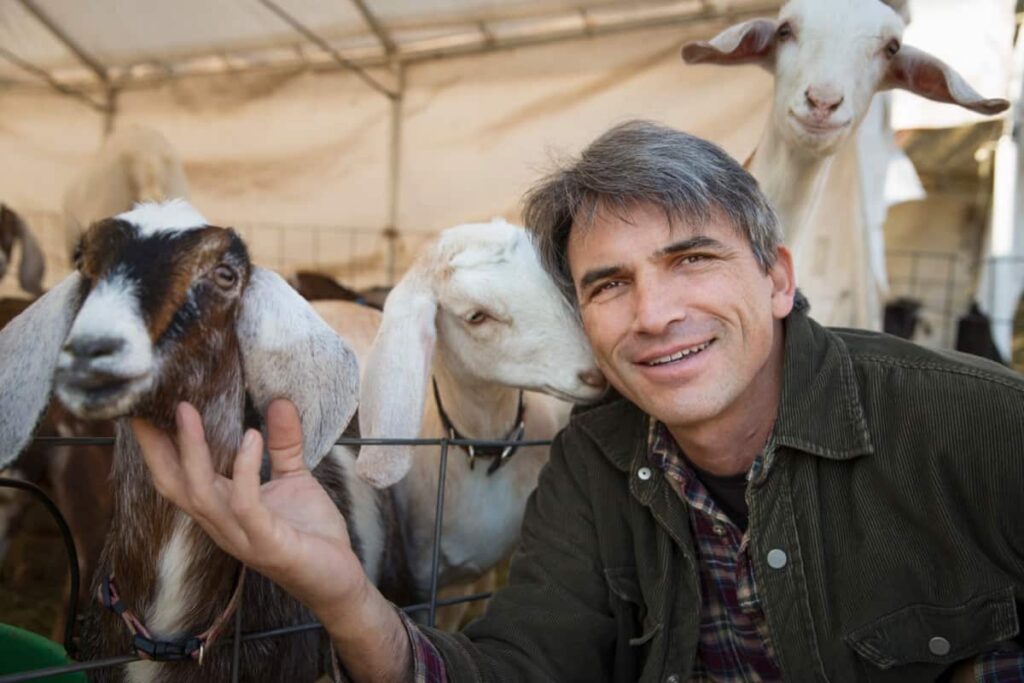
Kota Karoli Goat
The Kota goat breed is gaining popularity daily. This breed gained popularity in the previous two to three years. It is a costly breed suited for Eid purpose goat farming in India. This is an unrecognized Kota Rajasthan goat breed. Kota goats are an aggressive goat breed that gains weight rapidly when fed properly. A two-year-old goat can easily reach 120 kg live weight on optimal nutrition. Usually, the market price of a Kota goat during Eid is 1000 rupees per kilogram.
- Types of Grass Growing for Goat Farm
- How to Train Goats for Milking: A Beginners Guide
- Goat Milking Practices and Equipment: A Beginner’s Guide
- Goat Farming for Fiber: Producing Mohair and Cashmere
- Maximizing Goat Milk Production: Tips for Dairy Goat Farmers
- Goat Farming as a Family Business: Strategies for Success
- Profitable Kenya Goat Breeds for Commercial Dairy and Meat Business
- Unlock the Secrets of Oberhasli Goat: Discover Raising and Management Practices
- Ultimate Guide to Myotonic Goats: Explore Profile to Raising
- Unlock the Secrets of Rove Goat: Discover Management Practices
- Ultimate Guide to Malwa Goat: Explore from Origin to Management Practices
- How AI is Useful in Goat Farming: Precision Practices with AI-Driven Solutions
- Mastering Thuringian Goat: The Ultimate Guide for Beginners
- Comprehensive Guide to Carpathian Goats: Breeding, Care, and Products
- Ultimate Guide to Kinder Goats: Raising, Breeding, Feeding, Care, Milk, and Meat Production
- Ultimate Guide to Payoya Goat: Raising, Breeding, Milk Yield, Diet and Care
- Ultimate Guide to Catalina Goat: Raising, Feed, and Care
- Ultimate Guide to Laoshan Goat: Characteristics, Origin, Price, Size, Lifespan, Raising and Care
- Nubian Goat Feed Management: A Comprehensive Guide for Beginners
- Pygmy Goat Feed Management: A Comprehensive Guide for Beginners
- Boer Goat Feed Management: Understanding Feeding Requirements, Program, Schedule, and Rations
- Australian Melaan Goat: Characteristics, Price, Disadvantages, and Raising
- Top 10 Goat Weight Gain Supplements: Best Goat Weight Gain Formulas
- Afar Goat Breed: Characteristics, Raising, and Management
- Belgian Fawn Goats: How to Raise and Care
- Chyangra Goat: History, Origin, Characteristics, Size, Lifespan, Uses, Price for Himalayan Goat
- Asmari Goat: Breed Characteristics, Origin, Size, Lifespan, Price, and Raising
- Gestation Period of Goats in India: Calendar and Calculator
- Milking Procedures and Dairy Product Processing in Goat Farming
- Managing Parasites in Goats: Prevention, Diagnosis, and Treatment
- Integrating Goats into Sustainable Farming Systems
- Mineral Supplementation in Goat Diets: Meeting Nutritional Requirements
- Utilizing Goats for Weed Control in Pastures and Woodlands
- Goat Farming Business 101: Exploring Basics of Goat Farm Business
- Steps to Start Goat Farming in Nagaland: Housing, Health Care, and Marketing
- Artificial Insemination in Goat Breeding: Pros and Cons
Best goat in east u.p. for milk and meat purpose.